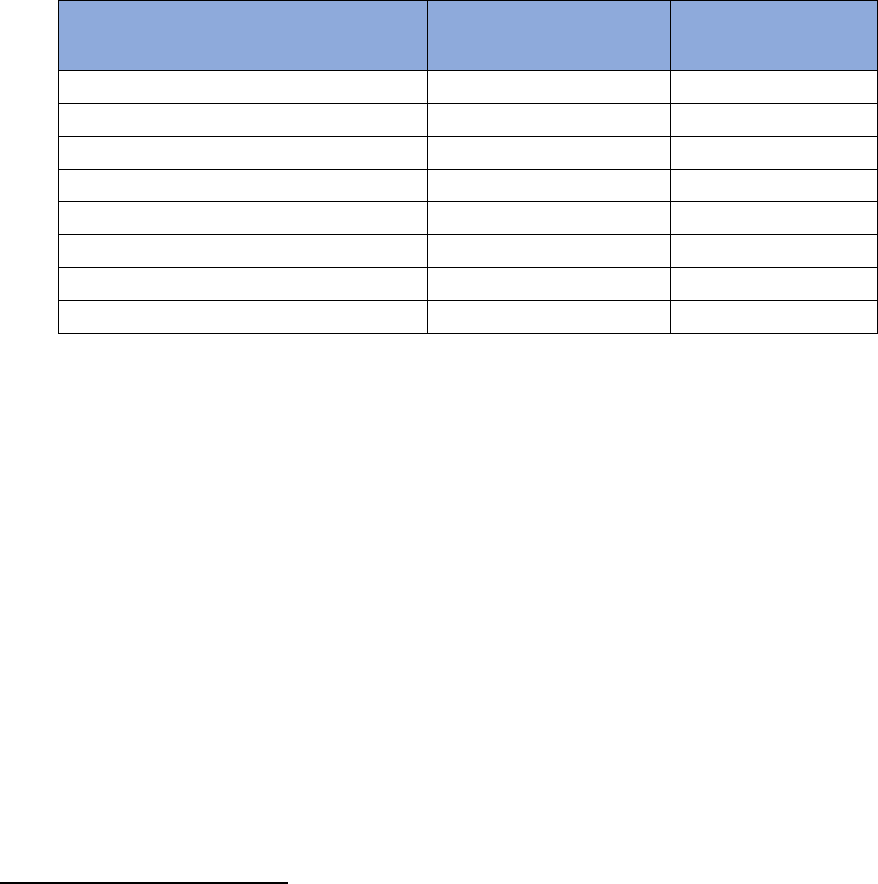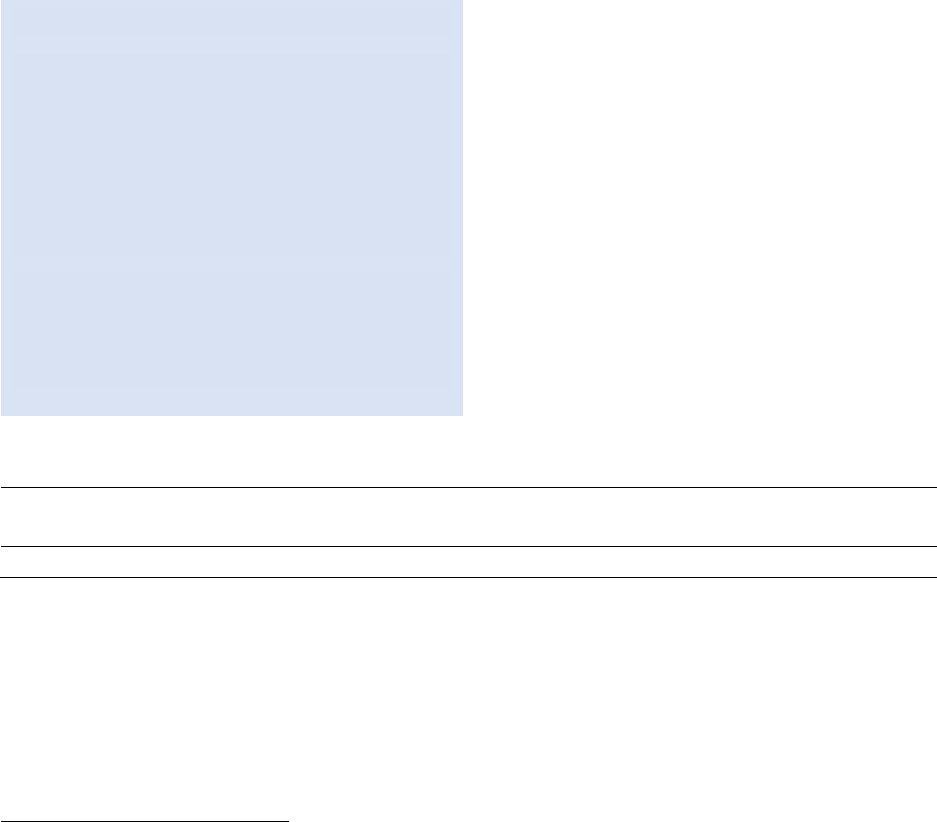
1
Auto-Enrollment for the College Bound Scholarship
collegebound@wsac.wa.gov | (888) 535-0747, option 1 | collegebound.wa.gov
January 2023
College Bound Scholarship: Automatic Enrollment Expands
Access to Financial Aid for Washington’s
Low-Income Students
Established in 2007, the College Bound Scholarship (CBS)
is an early commitment of state funding intended to
improve high school graduation, college enrollment, and
completion rates for low-income students. The program
provides awareness of available grant funding designed to
alleviate financial barriers that prevent low-income
students from considering college.
1
As of Fall 2021, students are automatically enrolled in CBS
if they attend a public school and are eligible for free and
reduced-price lunch (FRPL) in 7th or 8th grade, or newly
eligible in 9th grade. Foster youth, or any youth who is a
dependent of the state between 7th grade and high
school graduation, are automatically enrolled. Private
school and homeschool students can also apply.
In this brief, we detail the history of the policy change and
demonstrate its importance as it relates to serving the scholarship’s target population. We also
provide early descriptive information on how enrollment and uptake have changed since auto-
enrollment took effect.
2
1
College Bound was funded at $34.3 million from the Legislature for the 2021-23 biennium on top of Washington
College Grant (WCG) awards. There may be caseload adjustments in the 2023 Supplemental Budget.
2
The scholarship combines with the WCG and other state aid to cover the cost of average tuition (at comparable
public college rates), some fees, and a small book allowance at over 65 colleges, universities, and technical schools
in Washington.
The College Bound Scholarship Pledge
Even with the transition to automatic
enrollment, eligible students must still
fulfill the pledge requirements, which
include:
• Graduate from a Washington State
high school with a 2.0 GPA or higher
• Not be convicted of a felony
• File a financial aid application,
either the FAFSA (Free Application
for Federal Student Aid) or WASFA
(Washington Application for State
Financial Aid), during their senior
year of high school and each year
they attend college to determine
their income eligibility.

2
Auto-Enrollment for the College Bound Scholarship
An Equity-Minded Policy Change for an Equity-Minded Scholarship
Program
Addressing college access barriers that students of color disproportionately experience is integral
to achieving Washington’s statewide attainment goal of 70% of residents aged 25-44 earning a
credential. The population of students who receive the College Bound Scholarship—which is
targeted at low-income students—are more likely to represent racial/ethnic minority groups
than the overall K-12 population in Washington (see Table 1 below).
Table 1. Distribution of Washington K-12 Students and Students Who Signed Up for CBS by
Race/Ethnicity
Race/Ethnicity
Percent of K-12 Student
Population
Percent of CBS
Population
American Indian/Alaskan Native
1.3%
1.7%
Asian
7.8%
5.8%
Black/African American
4.4%
7.3%
Hispanic/Latino of any race(s)
23.4%
41.1%
Native Hawaiian/Other Pacific Islander
1.1%
2.2%
Two or More Races
8.8%
7.2%
White
53.1%
34.7%
Grand Total
3
100%
100%
However, without auto-enrollment, not all eligible students completed the CBS application. Prior
to the COVID-19 pandemic, approximately 30% of the eligible FRPL population did not sign up by
the end of 8th grade. Auto-enrollment removes the barrier that prevents eligible students from
completing their applications, furthering the capacity of state funding to break down access
barriers for populations historically underserved by higher education.
An Existing Outreach Challenge Worsened by the Pandemic
When the COVID-19 pandemic shuttered school buildings in the spring of 2020 and schools
transitioned to online learning, an already cumbersome enrollment process became a more
pronounced barrier to accessing the College Bound Scholarship. Middle school counselors were
forced to work remotely while trying to complete CBS applications, but without in-person face
time with students, application counts for eligible classes declined precipitously.
Figure 1 below shows the number of completed CBS applications for the two cohorts impacted
by the March 2020 school closures compared to the most recent pre-pandemic cohort (class of
2023 in both instances). The class of 2025 cohort was in 7th grade at the onset of the pandemic
3
Source: OSPI review of WSAC and OSPI student enrollment and CBS application data. Overall K-12 student
population includes students whose race is reported to WSAC by OSPI. CBS student population includes 8th grade
students who signed up by the end of the 2018-2019 academic year.

3
Auto-Enrollment for the College Bound Scholarship
and the class of 2024 cohort was in 8th grade. When school closures began in March 2020
(identified by the red diamond on the graphs), each cohort experienced a noticeable slowing of
CBS application completions compared to the pre-pandemic cohort. This trend suggests that
school closures had a negative effect on CBS application completions.
Figure 1. School building closures in March 2020 led to fewer completed CBS applications than
before the pandemic.
4
In December 2020, Governor Inslee issued a 30-day emergency proclamation that suspended
the signature requirement for eligible students to sign up for CBS. Previously, a student and
parent/guardian were required to sign and complete a CBS application. During the emergency
proclamation, the Washington Student Achievement Council (WSAC) completed applications for
thousands of eligible students without signatures. In January 2021, when it ended, school
buildings were still closed, once again rendering the signature requirement a barrier to access.
Making Auto-Enrollment Permanent with SB 5321
During the 2021 Legislative session, Senator T’wina Nobles sponsored Senate Bill 5321, which
proposed making permanent the automatic enrollment of eligible students.
5
This bill eliminated
the need for students and parents/guardians to sign application forms to enroll in the College
4
Source: WSAC administrative data of CBS applications, pulled August 2020.
5
https://app.leg.wa.gov/billsummary?BillNumber=5321&Year=2021&Initiative=false
0
5,000
10,000
15,000
20,000
25,000
30,000
35,000
Total CBS Applications in 7th Grade
During Pandemic
(Class of 2025)
Pre-Pandemic
(Class of 2023)
0
5,000
10,000
15,000
20,000
25,000
30,000
35,000
Total CBS Applications in 8th Grade
During Pandemic
(Class of 2024)
Pre-Pandemic
(Class of 2023)

4
Auto-Enrollment for the College Bound Scholarship
Bound Scholarship program. SB 5321 became state law in June 2021, and in fall 2021 WSAC held
the first of two webinars that introduced the change to college access professionals and middle
and high school counselors.
Now, WSAC executes the enrollment process, so schools no longer need to focus their energy on
seeking signed application forms. School staff are still responsible for regularly updating
students’ mailing addresses and contact information in WSAC’s secure data portal (the
“Toolbox”), but most of their face-to-face time with students is no longer consumed by
administrative hurdles related to the application. School staff interested in conducting local
outreach can also use the Toolbox in the WSAC portal to monitor which students WSAC
identified as CBS eligible using data from the Office of Superintendent of Public Instruction
(OSPI). With this information, they can inform their CBS students and families about the
scholarship opportunity. The Toolbox currently has more than 1,800 users.
Using the contact information provided by the
schools, WSAC staff can communicate with
students and families directly about their
eligibility for CBS. Students are mailed CBS
certificates of enrollment along with
information about the pledge requirements.
To support multilingual families, WSAC sends
certificates in English and Spanish depending
on a student’s home language, with plans to
expand to additional languages in the future.
Table 2 shows the number of College Bound
applications has increased by nearly 20,000
(66%) since the shift to auto-enrollment.
Table 2. CBS Applications Before and After Auto-Enrollment (SB 5321)
Before SB 5321
(AY 2018-2019)
After SB 5321
(AY 2021-2022)
Difference
Applicants by the end of 8th grade
6
30,008
49,912
19,904
An increasing number of schools and districts have implemented universal free meals, and OSPI
submitted a proposal for statewide universal free meals for consideration in the 2023 legislative
session. Regardless of a district’s meal process, they are encouraged by OSPI to submit
income/FRPL eligibility information for all students. Given that initial CBS eligibility for auto-
enrollment is based upon FRPL eligibility status at public schools, expansions of universal free
6
Includes all students from public schools who completed a CBS application (AY 2018-2019) or were completed
due to auto-enrollment and the Governor’s Proclamation (AY 2021-22). Data pulled as of August 2022.
The Mechanics of CBS Auto Enrollment
WSAC and OSPI partner together to identify
students eligible for auto-enrollment. Districts
report to OSPI on FRPL eligibility
, which is
determined by a variety of methods, including
but not limited to FRPL applications, family
income surveys and direct certification of
students receiving public assistance benefits.
Foster youth are automatically enrolled from 7th
grade until high school graduation through a
partnership between WSAC and the Department
of Children, Youth and Families (DCYF).

5
Auto-Enrollment for the College Bound Scholarship
meal programs may require adaptations in CBS’s operations to ensure eligible students are not
inadvertently excluded.
Not Just Auto-Enrollment: WSAC CBS Support for Students, Families, and
College Access Professionals
Engaging with students who are eligible for the College Bound Scholarship requires more than
automatic enrollment. With the goal of helping low-income students identify and access aid for
college, WSAC provides additional supports and resources related to CBS.
OtterBot
Launched in the fall of 2019, OtterBot is WSAC’s artificial intelligence (AI)-
informed chatbot texting tool that is designed to help Washington high school
students navigate the financial aid and postsecondary education application
processes. High school juniors and seniors in Washington’s CBS program
receive periodic text messages from OtterBot about financial aid information,
resources, and deadlines.
High school juniors and seniors who are enrolled in CBS and have a cell phone
number on file are automatically enrolled in OtterBot.
CBS staff work collaboratively with the K-12 system, state agencies, non-profit
organizations, and regional college access groups to assist students and
families in understanding CBS information and eligibility requirements, and in
filing the FAFSA or WASFA.
The Washington College Access Network, under the College Success
Foundation’s umbrella, supports College Bound Regional Officers who work
with districts and schools on designing and implementing College Bound
outreach and support strategies.
WSAC also works with many regional networks and other Community-Based
Organizations.
WSAC’s website includes:
• Resources on how to maintain eligibility, meet program
requirements, and access the scholarship.
• Information for school and non-profit organization staff on how to
request free promotional materials.
WSAC also communicates regularly through email:
• Over 4,000 college access professionals and school counselors in
Washington State receive messages with resources for and guidance
on supporting CBS students.
• College Bound students and families receive monthly emails with
tips on preparing for college and reminders about how to access the
scholarship.
